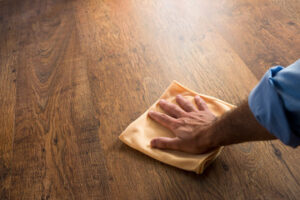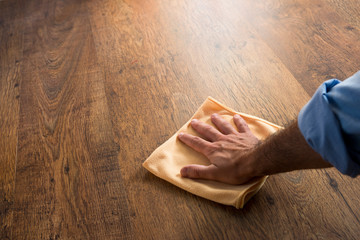Hardwood floors need a finish coat to protect them from wear and tear. Hardwood Floor Refinishing NJ gives them a new look and adds years to their lifespan.
First, you’ll need to sand the floor. A drum sander works well for most areas. For corners and edges, a handheld floor edger is more efficient.
The cost to refinish hardwood floors can vary significantly, depending on several factors. These include the size of the space, the condition of the existing flooring, and the type of finish selected. The price per square foot is also influenced by local labor rates and materials costs. It’s important to consider all of these variables when calculating the total cost of the project.
Some woods require extra care and attention to refinish, while others are more durable and can be finished quickly. It’s also important to consider any repairs that may be necessary before refinishing your floors. For example, if your floors are damaged, the cost will increase to repair the damage and restore the beauty of your home.
When choosing a professional to refinish your hardwood floors, it’s crucial to choose a reputable company with a good reputation and a good track record. Checking customer reviews and asking for references can help you find the best contractor. In addition, make sure that the company has liability insurance and a license to work in your state.
One of the biggest expenses associated with refinishing hardwood floors is the sanding process. This is a time-consuming process that can take up to four days. It’s also important to use a high-quality sanding machine to get the best results. In addition, sanding can produce a lot of dust. This can be a huge health hazard, so it’s essential to have proper ventilation in the area during this process.
Another major expense is the staining process. While this is optional, it can give your floors a more vibrant look and can make them stand out from the competition. Staining is a labor-intensive process and can be costly, but it’s well worth the investment. Staining your floor requires special equipment, and the price of the stain depends on your choice of color and finish.
Keeping up with regular maintenance is an effective way to extend the lifespan of your hardwood floors. For instance, placing mats or rugs at entrances will catch dirt before it scratches the surface of your floors. Additionally, you should sweep or vacuum regularly and use felt pads on furniture legs to avoid damaging your floors. Lastly, you should also schedule regular deep cleanings with a professional to keep your floors in optimal condition.
Time
Refinishing hardwood floors takes a substantial amount of time. Before you start, it’s important to prepare the area by cleaning and repairing damaged areas. You’ll also need to rent a large drum sander for the sanding process, which can take up to two days. Then, it’s time to apply the finish. You can choose between oil-based and water-based polyurethane finishes, each of which requires different drying times. Oil-based finishes are more durable, but they can take 24 hours to dry before you can walk on the floor again. Water-based finishes dry much faster, but they are not as durable and may require a few additional coats.
A professional refinishing company will have years of experience and know-how, so they can handle the project quickly and efficiently. They will use high-quality equipment to get the job done right. They will also be able to provide you with a timeline for the project.
In addition to refinishing, professionals can also repair minor damage to your hardwood floors. These issues can include scratches, water damage and dents. Refinishing is a great way to improve the overall appearance of your home, and it can add value to your property. However, it’s not a DIY project for the average homeowner, and you should seek professional help to avoid costly mistakes.
Depending on the type of wood, refinishing can take four to seven days. A flooring professional will start by sanding the wood in stages, from rough to fine. It’s important to sand in a straight line, as any deviation can leave long grooves or dips in your floor.
After sanding, the flooring professional will clean the surface of your wood floors to remove dirt and dust. They will also use a degreaser to remove any grease and wax that has built up on the floor. This step can be labor intensive, but it’s vital to a successful result.
Once the sanding and cleaning are complete, the flooring professional will apply the stain or varnish to your wood floors. These products protect the wood from moisture and sun exposure. Stain is typically oil-based and low in VOCs, while varnish is usually water-based. Both of these types of products have their pros and cons, so it’s best to consult with a flooring professional to decide which option is right for your wood floors.
Materials
Hardwood floors are a classic feature in many homes, but they can be worn down over time. A refinish is necessary to remove the old finish, restore the surface of the wood and add color. The cost of the refinishing process depends on the type of hardwood and its current condition. The wood’s grain pattern also determines the type of refinishing needed.
A refinishing project requires several materials, including stain and varnish. The stain gives the cedar, oak or other types of wood the desired color and is usually oil-based with a tinting base to adjust the intensity of the stain. The varnish seals the stain and protects the floor from water and daily wear. It can be brushed on the wood or applied using a spray. Varnishes are available with a variety of sheens, from matte to high-gloss.
Before starting a refinish, it’s important to clear the floor of furniture and other items. This ensures that the floors are smooth and free of dents and scratches. It’s also a good idea to close the windows and doors to keep dust contained inside the room while sanding the wood.
Typically, a refinish can be completed within a week or less. However, if the floor has severe damage or serious water damage, it may be more practical to replace the flooring entirely. A simple test can help you determine if your hardwood is ready for refinishing: put a drop of water on the wood. If the water soaks into it, your floor’s protective layer has worn off and it’s time to refinish.
To refinish your hardwood, you’ll need to remove all furnishings and clean the surface of the wood with a damp mop or rag. Then, you can start sanding the floor with a drum or belt sander. You’ll want to start with a coarse grit sandpaper to remove the old finish and then move on to finer grits to make the surface smooth. After sanding, you’ll need to vacuum the floor and apply a tack cloth to remove any remaining dust. Then, you’ll apply a new coat of varnish or other finish.
Expertise
Wood floors have a timeless charm that adds to the aesthetic of any home. They also have a positive impact on a home’s value. However, over time, they can lose their luster and require refinishing to restore them to their original appearance. This is a labor-intensive task that involves sanding, staining and finishing. Hiring a professional flooring contractor is the best way to ensure quality results and a safe, timely completion of the project.
The first step in hardwood floor refinishing is to remove any damaged or worn boards. Then, the rest of the floor is sanded down to reveal the bare wood. The sanding process uses specialized equipment that allows for smooth, even surfaces. After sanding, the hardwood is stained to match the existing color or to create a new look. Depending on the type of stain, a variety of colors and tones can be achieved.
Hardwood floor refinishing requires special skills and knowledge of the wood species and finishes. It is important to understand the chemistry of stains, how they react with wood and how they will affect the overall appearance of the refinished surface. In addition, a refinishing specialist should be proficient in the use of all the tools required for the job. These include power saws, sanders and flooring nailers. They should also be able to work safely and follow proper safety guidelines.
Whether the refinishing process is done by hand or with a machine, it is critical that all dust and debris is removed from the room before the next step. If any dust is left behind, it will be trapped beneath the surface of the refinished floor and can cause damage and odors. Ideally, the room should be completely sealed and vented before the wood is sanded and stained.
The final step in hardwood refinishing is the application of a topcoat that protects the newly sanded, stained and finished wood from moisture and dirt. This step is essential for maintaining the integrity of the wood and preventing water stains, mold and mildew. A good topcoat will also help to resist scratches and scuff marks.

